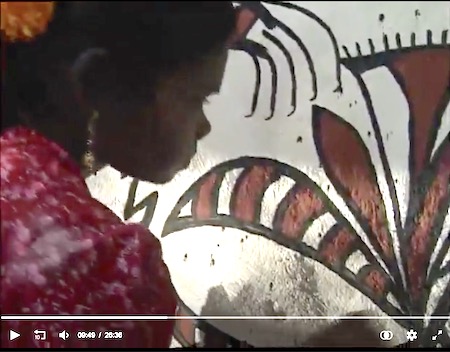This encyclopedia addresses the religions of a category of South Asians known as tribals, Ādivāsīs (“First Inhabitants”; or Janajātis, lit. “Class of People”; see also below), and, more recently, indigenous peoples. The three terms, “tribal,” “Ādivāsī,” and “indigenous peoples” are related, but have their own trajectories; they have come into use at different times and for different motives. The definition of tribe has changed since the colonial period and varies among the different South Asian countries. […]
Indian local communities shape their identity around their status of caste and/or tribe, and while some anthropologists have considered the boundaries between these presumably discrete identities to be porous, it is striking how tribal people perceive their identity as immutable, regardless of social dynamics. While not denying that discontinuity and innovation have affected the formation of identities in South Asia, they should not be treated as arbitrary constructions, as has been the trend in these postmodern times. […]
N. Ray (1972) mentions a category of peoples in Indian history that are generally identified as tribes. These were the janas, characterized by an egalitarian form of social organization, different from the communities who had a jāti, a hierarchical system of social organization. Other scholars have objected that it is not possible to identify janas with the present-day tribals. A. Béteille (1998), for example, argues that the distinction between jana and jāti must have been less clear in ancient times than the one between caste and tribe today. In India, the term “tribe” has referred, since the 16th century, to groups living under “primitive” and “barbarous” conditions. The colonial administration used the term to distinguish peoples who were heterogeneous in physical and linguistic traits and lived under quite different demographic and ecological conditions, with varying levels of acculturation and development. In the various countries of South Asia, tribal peoples were often called by derogatory terms such as jungli (“savage”) during the colonial period. […]
Source: Marine Carrin in “General Introduction”, Brill’s Encyclopedia of the Religions of the Indigenous People of South Asia edited by Marine Carrin (Editor-in-Chief) and Michel Boivin, Marine Carrin, Paul Hockings, Raphaël Rousseleau, Tanka Subha, Harald Tambs-Lyche, Gérard Toffin (Associate editors)
Brill’s Encyclopedia of the Religions of the Indigenous People of South Asia Online strives to reflect the diversity of indigenous cultures of South Asia with its many language groups and religious traditions. Religion is taken in a broad sense and includes aspects of morality, symbolism, identity formation, environmental concerns, and art. The approach is contemporary and not a reconstruction of an anterior state, though this does not exclude talking about historical processes. | Publisher’s website >>
[Bold typeface added above for emphasis]
ISSN 0169-9377
ISBN 978-90-04-35552-1
Copyright 2021 by Koninklijke Brill NV, Leiden, The Netherlands.

Watch all parts on Archive.org >>
Bihar | Jharkhand >>
Learn more
eBook | Background guide for education
Jawaharlal Nehru’s “five principles” for the policy to be pursued vis-a-vis the tribals
Tips for using interactive maps
Toggle to normal view (from reader view) should the interactive map not be displayed by your tablet, smartphone or pc browser
For details and hyperlinks click on the rectangular button (left on the map’s header)
Scroll and click on one of the markers for information of special interest
Explore India’s tribal cultural heritage with the help of another interactive map >>
See also
Adverse inclusion | Casteism | Rural poverty
Childhood | Tribal Children’s Right to Education in India
Demographic Status of Scheduled Tribe Population of India (Census figures 2011)
Fact checking | Figures, census and other statistics
Human Rights Commission (posts) | www.nhrc.nic.in (Government of India)
Search tips | Names of tribal communities, regions and states of India
“What is the Forest Rights Act about?” – Campaign for Survival and Dignity
“Who are Scheduled Tribes?” – Government of India (National Commission for Scheduled Tribes, NCST)

Tribal Literature by G.N. Devy >>
Free eBooks & Magazine: Adivasi literature and languages >>
“India, a union of states, is a Sovereign, Secular, Democratic Republic with a Parliamentary system of Government. The President is the constitutional head of Executive of the Union. In the states, the Governor, as the representative of the President, is the head of Executive. The system of government in states closely resembles that of the Union. There are 28 states and 8 Union territories in the country. Union Territories are administered by the President through an Administrator appointed by him/her. From the largest to the smallest, each State/UT of India has a unique demography, history and culture, dress, festivals, language etc. This section introduces you to the various States/UTs in the Country and urges you to explore their magnificent uniqueness…” – KnowIndia (Government), States and Union Territories (Visited: 2 September 2023)
Learn more about India’s 28 States and 8 Union Territories – From Andhra Pradesh to West Bengal | Nutrition >>